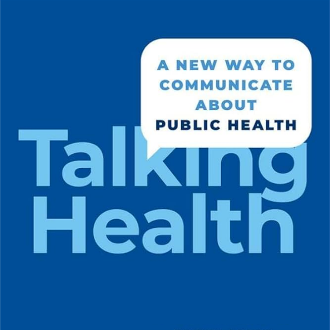| |
Public Health
System Transformation Update
A monthly update from the Joint Leadership Team sharing how, together, we're creating a seamless, responsive, publicly-supported public health system in Minnesota

|
|
What does system transformation mean to you?
Thoughts from Commissioner Tarryl Clark of Stearns County

Like many elected officials, I entered public service because I wanted to find ways to connect with others, to help strengthen families and create vibrant communities.
And, like many elected officials, my work was supporting community health long before I knew to call it public health or population health.
We “electeds” might not realize at first that the work we do is very much public health-focused, but it is: Like our public health partners, we’re about connecting, leveraging ideas, finding the right person or group to make a difference.
As electeds and public health professionals partner to build strong communities, we have to help our colleagues see they already play a role in building health, and they don’t even need to change much of what they’re doing.
We can help them have that “aha, wait a minute!” moment, where they see their work connecting back to health—that public health isn’t just vaccines and emergency response, which are very important, but that public health is also about making sure kids are ready for school, using data to drive watershed management, fighting social isolation, soil and water conservation, maternal and child health, working for safe and affordable housing, helping fill food deserts in rural and urban settings. And, of course, partnering and building relationships with people in similar or different positions from our own, empowering our public health workforce, and helping community partners make a difference.
If we can help our colleagues see how their existing work supports public health and keep building connections, we can move forward together so that everyone has the opportunity for good health wherever they live, regardless of their zip code.
|
Commissioner Tarryl Clark was elected to serve Stearns County in 2018, representing the county’s first district on its board of commissioners. Commissioner Clark chairs the State Community Health Services Advisory Committee (SCHSAC), and serves as a SCHSAC representative on the Joint Leadership Team. Her favorite place to be in Minnesota is on a lake with her grandkids, listening to the loons and taking in each season's beauty.
|
|
|
Do you see examples of a seamless, responsive, publicly-supported public health system in your community? Let us know!
|
|
A seamless, responsive, publicly-supported public health system: What does that mean?
We envision a seamless, responsive, publicly-supported public health system that works closely with the community to ensure healthy, safe, and vibrant communities. This system of state, local, and tribal health departments will help Minnesotans be healthy regardless of where they live. – Joint Leadership Team vision
When we dig into the Joint Leadership Team vision above, what do "seamless," "responsive," and "publicly-supported" mean? What might they look like in a transformed and strengthened governmental public health system in Minnesota?

This month, we explore "seamless."
A seamless public health system works cohesively: across jurisdictions, levels of government, geographies, sectors, and more. Where you live shouldn’t determine your level of public health protection, and every agency that helps shape opportunities for population health can work together to do so. People, diseases, air, water, and soil aren’t bound within jurisdictions—neither is public health.
What would this mean?
- "Everyone’s on the same page—we’re not talking past each other."
- "We have clear roles and responsibilities for who does what, and mechanisms to coordinate, communicate, and maintain partnerships."
- "We’re highly collaborative."
- "I’m not feeling alone out in the ‘public health woods.’"
- "It’s easier for partners to work together—the rules for public health don’t change when we cross jurisdictional boundaries."
What might this look like?
- “Hub” service models, like a one-stop shop for food inspection so customers don’t have to interface with many entities.
- Standardized ways of sharing data across public health partners; data flows easily through the system and partners can use it to inform decisions.
- Strong local relationships between government and community, so partners don’t have to “leapfrog” their localities to find someone they know or trust.
|
|
Speaking consistently about the role and value of public health
|
Do you sometimes struggle to talk about what you do in a way that others outside public health (a) understand and (b) get excited about?
The Joint Leadership Team does, too, and is working with an independent communications firm to create a message toolkit for Minnesota’s public health workforce. We (and our partners) can use it to talk more cohesively about the role and value of public health, and why we need to transform and strengthen our public health system.
The toolkit will be ready this summer, and LPHA, MDH, and SCHSAC will provide space to share it, learn about it, discuss it, and try it out. Watch for more information from these groups.
|
|
 |
Using data on capacity to support strategic planning and business planning
|
Local public health leaders are meeting with the MDH Center for Public Health Practice to learn how the findings from the 2022 "cost and capacity assessment" can shape their strategic planning, funding decisions, and communication opportunities.
This assessment, conducted by the University of Minnesota, measured the Minnesota governmental public health system's capacity to fulfill foundational responsibilities, the cost associated with current work, and the cost associated with the entire system fulfilling all foundational responsibilities.
Read a memo from the Joint Leadership Team on this assessment and review the full report: Publications and Resources: Cost and Capacity Assessment.
|
|
 |
Kicking off work on the ground to increase capacity in foundational responsibilities
|
Minnesota’s community health boards are finalizing how to use new funding from the Minnesota Legislature to support foundational public health responsibilities—a down payment on the state’s health.
Over half of community health boards will focus on assessment and surveillance, equity, communications, community partnership development, and organizational competencies (often in combination with or in addition to other foundational responsibilities).
|
|
 |
Convening to learn about, discuss, and share foundational work
Please note: The views expressed in these resources are those of the specific authors and organizations creating these resources, and do not necessarily reflect those of the Joint Leadership Team, its members, or its represented sectors.
 |
|
Book: Talking Health: A New Way to Communicate about Public Health (de Beaumont Foundation, 2022): If you can’t wait for this summer’s message toolkit to help Minnesota’s public health workforce talk about the role and value of public health, you can preview similar concepts in Talking Health. Each chapter in this book covers a different theory or method, to help you and your colleagues strategically communicate about public health in ways that bridge the divide between public health and other sectors.
|
|
|
What are foundational responsibilities?
Where you live should not determine your level of public health protection.
The governmental public health system has a set of foundational responsibilities it stewards, defining what needs to be in place everywhere for Minnesota's public health system to work anywhere, as we work toward a more seamless, responsive, and publicly-supported public health system.
|
|
Contact a specific member of the Joint Leadership Team
Based on the collaborative nature of this work, please direct any questions or feedback to one of the following.
-
Local public health staff and leadership: Please contact your LPHA representatives currently serving on the joint leadership team.
-
MDH staff and leadership: Please contact the MDH staff currently serving on the joint leadership team.
-
SCHSAC members and alternates: Please contact the SCHSAC representatives currently serving on the joint leadership team.
General questions
For general questions, including about funding, grants, and eligible activities: Please contact the MDH Center for Public Health Practice at health.ophp@state.mn.us.
Not sure who to contact?
Visit Ask a Question: Transforming the Public Health System in Minnesota. Joint Leadership Team members review these questions on a regular basis and respond as needed or requested.
|
|
|
|
|